How to Embrace Slow Decorating, a Décor Trend That Encourages You to Create a Collected Look
Experts explain how you can create a beautiful home by decorating it mindfully.
:max_bytes(150000):strip_icc():format(jpeg)/fireplace-decor-04-gray-mosaic-tile-1023-ea4a6855f21e416cbf550c69e1ba434c.jpg)
Thomas Kuoh Photography
We all desire a home that’s as beautiful as it is comfortable and also reflective of our own personal style—even if we’re not fully certain yet what that is. Whether you’re decorating a new home or improving the one you’re in, it's tempting to want to fast-forward to the exciting "reveal" at the end. But decorating a home entails more than just a few good hauls—which is where "slow decorating" comes in. There’s much to be gained by slowing things down and embracing every decision. Ahead, we asked designers to explain what slow decorating is and give their expert tips for implementing it in your home.
Related: Pattern Drenching Is About Bold, Complementary Patterns—Here's How to Do It Well
What Is Slow Decorating?
Think of slow decorating as the mindfulness approach to home design and décor—you will get out of it as much as you put in. "The slow decorating trend is rooted in mindfulness and intentionality," says Gabriela Eisenhart, founder of Silo Studios. "It's all about the curation and sustainable methods versus the fast fashion of interior design. It's a satisfying journey, but you have to be willing to surrender to the expectation of having a fully furnished home in a moment's notice."
For professional designers who begin every client engagement by questioning and listening, intentionality comes naturally. "The notion of 'slow decorating' is very much baked into our process," says Bethany Adams, a Louisville-based interior designer and principal at Bethany Adams Interiors. "Even if we have a client whose impulse is to just get it all done at once, the reality is that 'at once' will mean a great many months and involve many conversations about how the clients live in their home, their tactile and aesthetic preferences, the pieces they already own that they would like to incorporate and where they are most comfortable investing their money.”
If you can answer those initial four things, you are well on your way. Now, relax and enjoy the process.
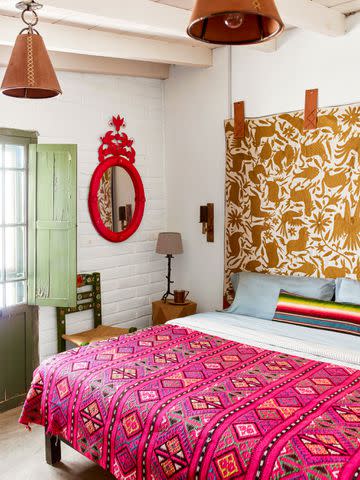
Eric Piasecki
Tips for Slow Decorating Your Home
While slow decorating has always been with us—we all have friends or acquaintances whose homes reflect a lifetime of collecting beautiful and needful things—the current trend began to take off post-pandemic.
"I believe the 'slow decorating' trend was born from the frenzy around the need to change our environments during the pandemic," says Viki Chupik, Austin-based interior designer and principal at Chupik Design. "For a home to feel soulful and appear collected and layered, it must contain a blend of both new and storied pieces that simply can’t be purchased in a short period."
If you’re open to approaching decorating as an ever-evolving venture, read on to learn these expert-backed tips for slow decorating.
Related: Rom-Com Décor Is Trending—and It’s as Swoon-Worthy as You'd Expect
Enjoy the Process
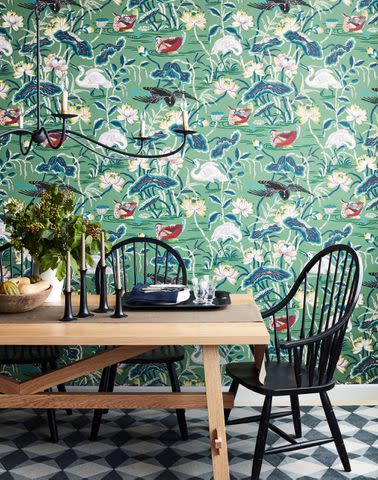
Lennart Weibull
While it's natural to crave instant gratification, professionals say that when it comes to designing and furnishing your home, the process is definitely the best part. "The very best interiors tell a story and evolve over time," says Lauren Sullivan, interior designer and principal at Well x Design, a bespoke virtual design studio based in Tennessee. "The hunt is part of the process and, for me, the most enjoyable part. There's something gratifying about searching for that one special object and knowing you’re going to love it just as many years from now as you did the day you found it."
"Slow curation challenges the idea of full-service turnkey design a bit," she says. "But slow curation is liberating."
Assess Your Home's Architecture
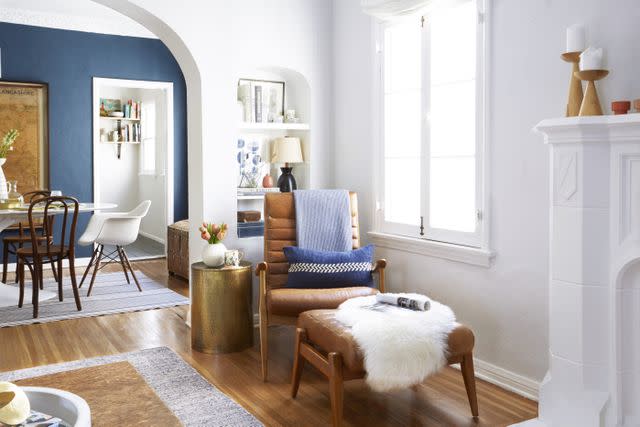
Zeke Ruelas; Emily Henderson Design
It’s natural to want to embark on a home design project by gathering inspiration from social media, but don’t overlook the aesthetic cues inherent in your home. "Take a look first at your home's architecture," says Adams.
What architectural style is your home? Does it present features, such as arched doorways, a high ceiling, stunning windows, a focal-point fireplace, or beautiful woodwork, that you want to draw attention to? You want your décor to work with your home’s design strengths. "I believe in modernizing a home while staying true to its original architecture," says Eisenhart. "There are so many ways to refresh a space while staying true to its history."
Related: 20 Popular Architectural Home Styles You Should Know
Assemble the Basics
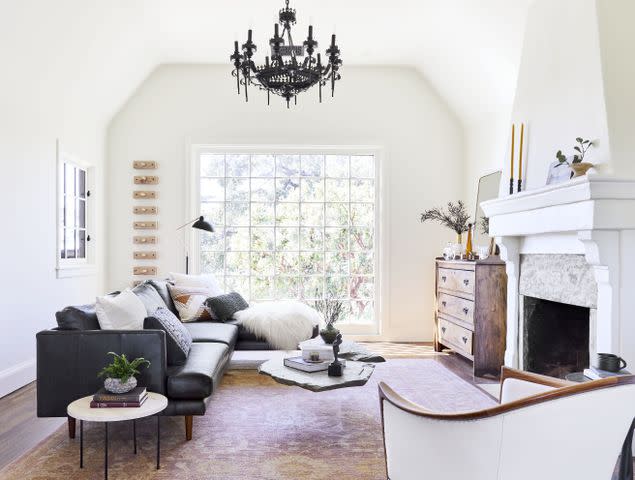
Sara Tramp-Ligorria; Deisgn by William Hunter Collective / Emily Henderson
There are certain furnishings that we all need because they answer day-to-day living needs. Everyone requires a bed; a dining table and chairs; living room seating and tables; rugs and lighting. Be guided first by purpose. "Form always follows function," says Chutkin. These are the questions that she always asks about a room, to quickly identify the priorities and needs:
What activities happen in the space?
How many people are going to be in the space?
How do I want to feel in the space?
How do I want my guests to feel in the space?
How can I foster connection in the space?
What specific tasks are done in this space?
Do I need privacy?
Do I need to control sound?
Do I need to control light?
But fight the impulse to acquire everything all at once—and definitely not from the same handful of stores. "The goal is to achieve a house that feels collected, rather than going shopping and buying everything on the same day from one supplier," says Chupik. "Identify the must-have pieces for move-in and focus on those items first."
Consider the Things That You Already Own
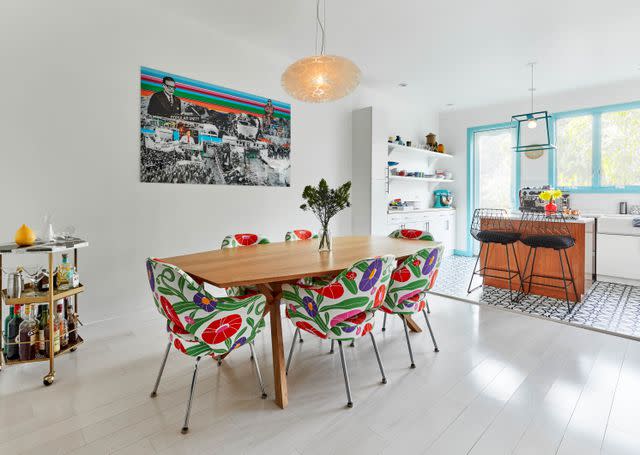
Jeremy Frechette
Most of us have accumulated a few things we love or feel that we can’t live without. There’s no need to start from scratch. "Start by taking stock of your existing furniture: do you have some good quality basics? Keep those," says Adams. "Look at the pieces you know you're going to keep for a long time. What colors are you drawn to? What textures?"
This exercise helps you to get a picture of not only what you like, but also what you will need to acquire. "Do you have your grandparents' dining table, but need new chairs?" says Adams. "Don't worry about matching the table—think about what would make you happy, and go out and see what you can find."
Some things you own may need to be refurbished. So you’ll have to make decisions about whether it’s worth the cost and effort. "Upcycle those with meaning," says Eisenhart. "Consider reupholstering, reframing, or letting it go if it doesn't speak to you anymore."
Shop With Purpose
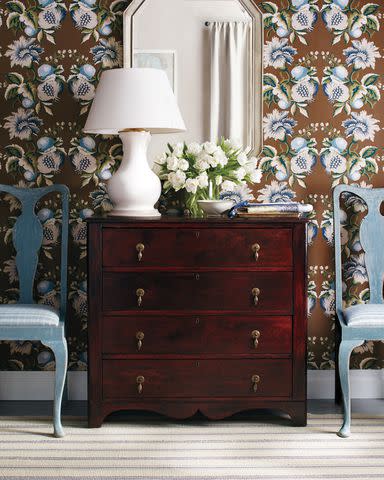
Ryan Liebe
Once you know what you’re keeping, you’ll be that much closer to knowing what you need to add. Start with large furniture pieces. "Choose items made of quality, natural materials," says Sullivan. "Yes, these require more of an investment—but solid wood furniture, for example, with detailed joinery and craftsmanship is going to hold up much longer."
Related: 11 Tips for Choosing Furniture for Small Spaces, According to Designers
Know When to Splurge and When to Save
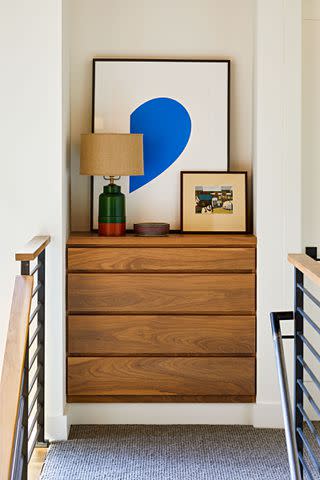
Eric Piasecki
There are no hard and fast rules about when to splurge and when to save on decorating. "Only you can decide what is worth it to you," says Adams. "Splurge on whatever feels special."
Think of some furnishings as investment pieces that you will keep for decades versus replacing again and again throughout the years, says Sullivan. "When you buy an item that truly speaks to you, you’re much more likely to keep it longer and out of landfills—avoiding 'fast' furniture and design."
Eisenhart spends more on big-impact items. "Splurge on your upholstered pieces, art, and rugs," she says. "You can save on tables and accent pieces."
Support Makers and Craftspeople
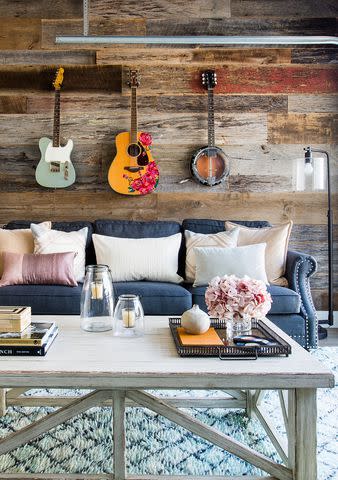
Dustin Walker
Always shop locally when you can—and seek out unique or handmade things. "The layering of special hand-crafted items alongside something crisp and modern creates interest, resulting in the push and pull of opposites that draw attention and provide excitement and tension in a space," says Chupik. "I am constantly searching for something a little imperfect to implement in each of my designs."
"Shopping local is not only sustainable but will infuse your home with one-of-a-kind pieces that fill your home with personality, especially when seeking a more curated look," says Eisenhart.
Don’t Forget Vintage
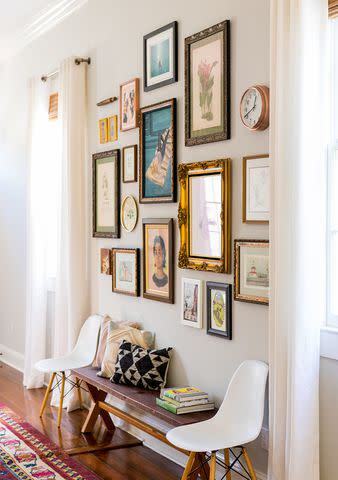
Dustin Walker
Finally, there’s a lot to be said for vintage furniture. A mix of old and new can help you achieve that layered look. "Vintage treasures are a wonderful way to slowly decorate because you can't go looking for them—they have to find you," says Adams. "And when they do, buy them right away. They won't be there when you go back later!"
Related: How to Thrift Shop Like an Interior Designer
Read the original article on Martha Stewart.

